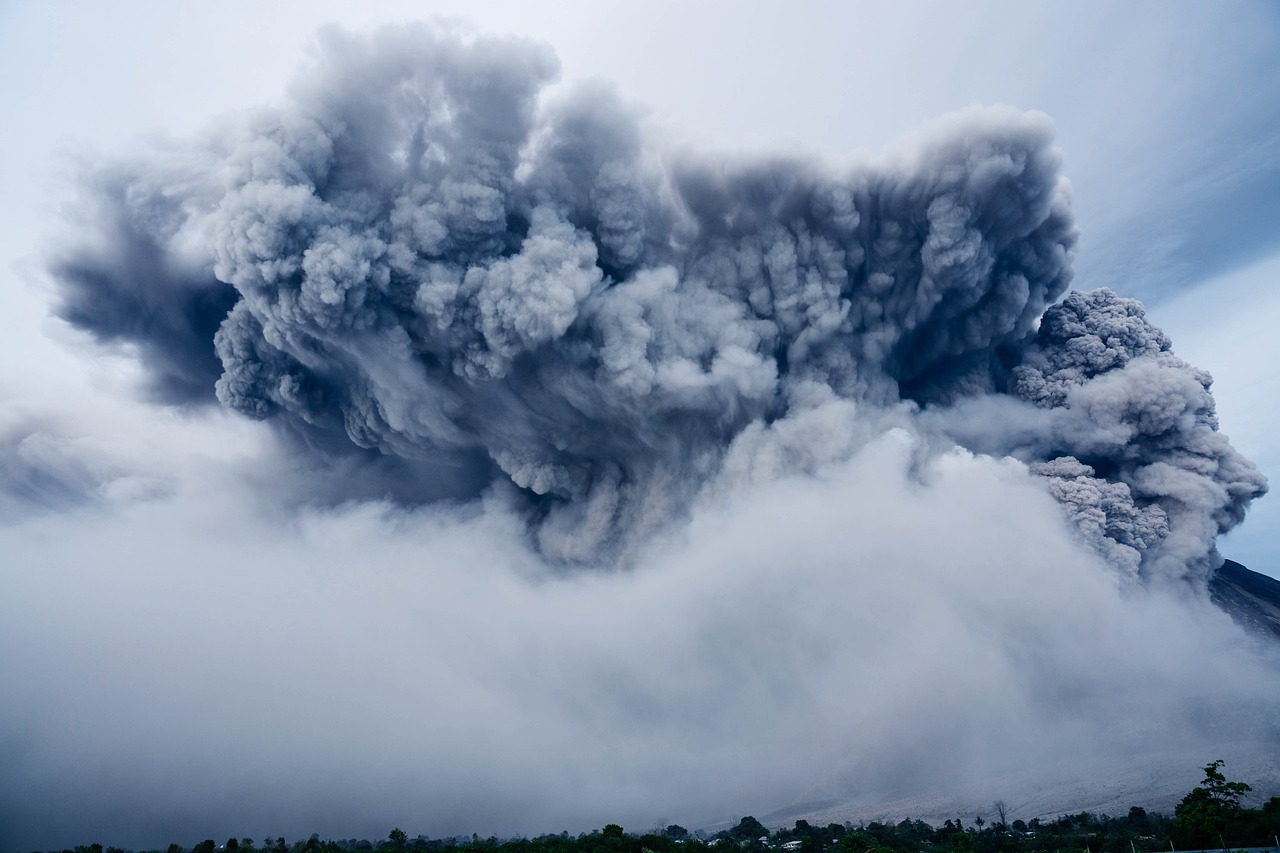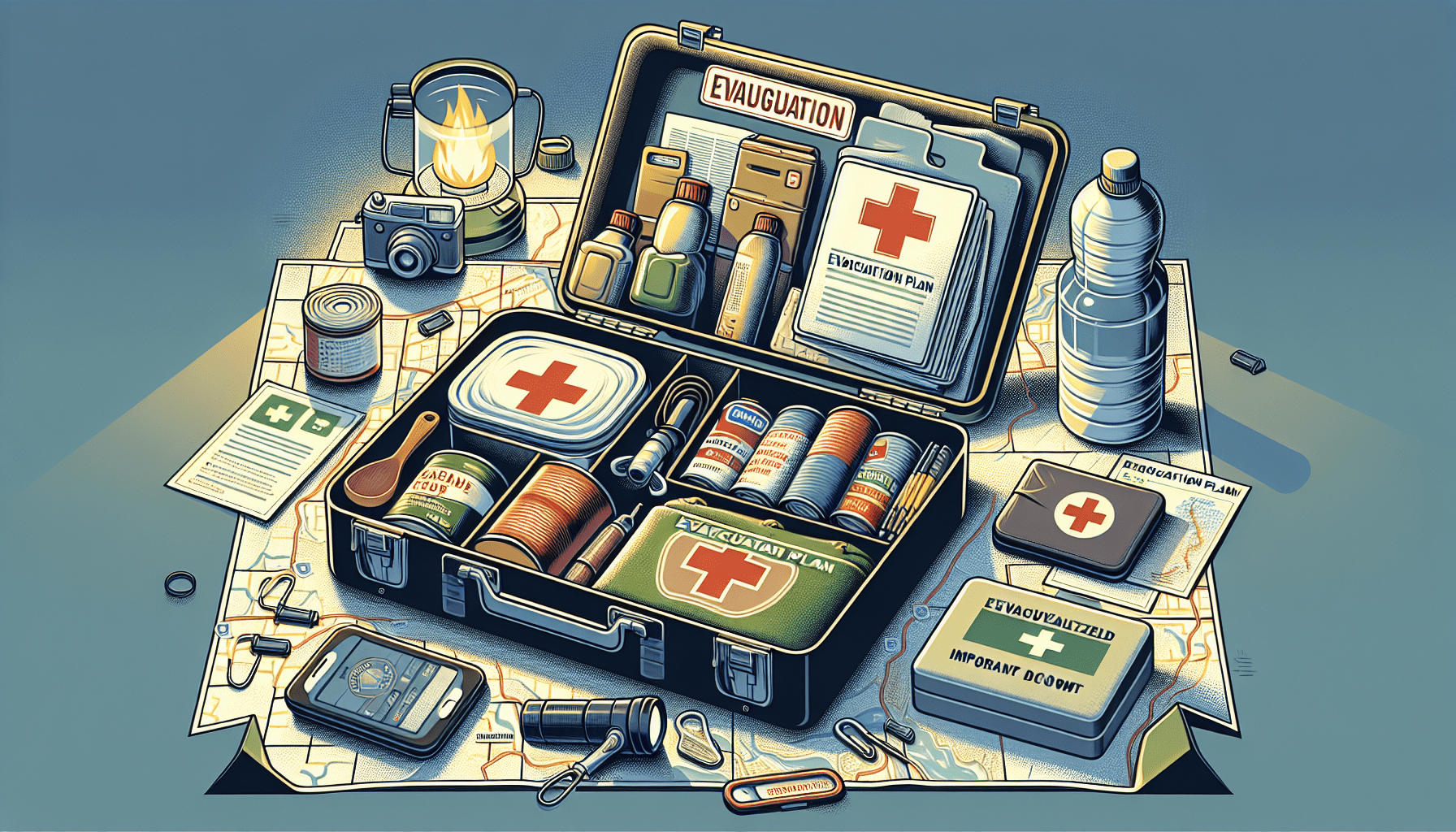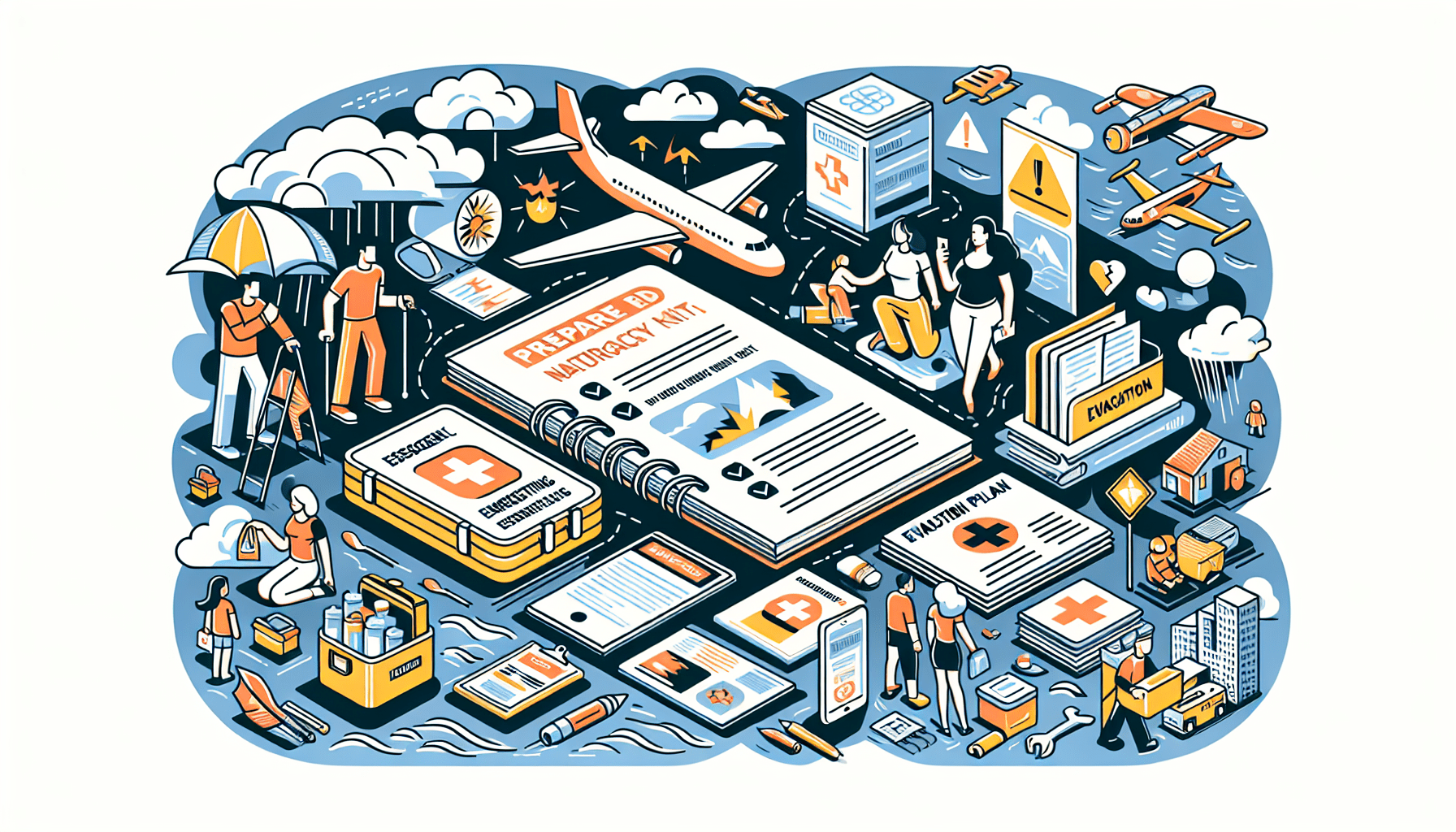Are you prepared for the unexpected? Natural disasters can strike at any moment, leaving you and your loved ones vulnerable and in need of assistance. In this comprehensive guide, we will take you through everything you need to know to be well-equipped and ready to face the wrath of Mother Nature. From creating an emergency kit to developing an evacuation plan, we’ll provide you with all the tools and knowledge you need to stay safe and secure during times of crisis. Don’t wait for disaster to strike – start prepping today and gain peace of mind for tomorrow.
Emergency Communication
Have a Communication Plan
When it comes to emergencies, communication is key. In a time of crisis, it’s important to have a plan in place to stay connected with your loved ones. Start by designating a central contact person who can serve as the main point of communication for your family or household. This person should be someone who lives outside of the immediate area, as they may be more likely to have reliable communication in the event of a disaster. Share this contact’s information with all members of your household, and make sure everyone understands the importance of checking in with this person during an emergency. Additionally, establish alternative modes of communication, such as text messages or social media platforms, as they may be more reliable when traditional phone lines are down.
Invest in a NOAA Weather Radio
One of the best ways to stay informed about potential disasters and emergencies is by investing in a NOAA (National Oceanic and Atmospheric Administration) Weather Radio. These radios can provide real-time updates on severe weather conditions, natural disasters, and other emergency situations. They often come equipped with features like alerts and alarms, ensuring that you receive important information even when you’re not actively monitoring the radio. By having a NOAA Weather Radio in your emergency preparedness kit, you can stay informed and make well-informed decisions to keep yourself and your loved ones safe.
Prepare a List of Emergency Contacts
In times of crisis, it’s crucial to have a list of emergency contacts readily available. This list should include the contact information for local emergency services, such as police, fire, and medical services. It’s also important to include the phone numbers of your family members, close friends, and neighbors who may be able to provide assistance or support during an emergency. Make sure to save this list in multiple formats, such as a physical copy stored in your emergency kit and a digital version stored on your phone or computer. Having these contacts easily accessible will save precious time and allow you to reach out for help when you need it most.
Emergency Food and Water

Stock Up on Non-Perishable Food
When preparing for a natural disaster, it’s crucial to have an ample supply of non-perishable food. In times of emergency, access to fresh groceries may be limited, making non-perishable food items your lifeline. Stock up on items such as canned goods, dried fruits, nuts, and energy bars. These foods have a long shelf life and can provide essential nutrients when other food sources are scarce. Additionally, don’t forget to consider any dietary restrictions or allergies within your household, ensuring you have an appropriate selection of food for everyone. Remember to regularly check expiration dates and rotate your stock to maintain freshness.
Store Water for Drinking and Sanitation
Water is a fundamental necessity for survival, and it’s vital to have a sufficient supply stored in case of an emergency. The general rule of thumb is to have at least one gallon of water per person per day, with a minimum of a three-day supply. This water can be used for drinking, cooking, and personal hygiene. Store water in sturdy, food-grade containers, and keep them in a cool, dark place to maintain their quality. It’s important to regularly inspect your water supply and replace it as needed to ensure it remains clean and safe to consume.
Consider a Water Filtration System
In addition to storing water, it’s wise to invest in a water filtration system as part of your emergency preparedness plan. In some situations, such as during a natural disaster, clean drinking water may become limited or contaminated. Having a reliable water filtration system can help purify water from various sources, like rivers or rainwater, making it safe to consume. There are many different types of water filtration systems available, ranging from portable options for individuals or families on the go, to larger systems that can provide clean water for an entire household. Research and invest in a system that fits your needs and budget, so that you can have peace of mind knowing you’ll have access to safe drinking water during an emergency.
First Aid Kit and Medications

Create a Comprehensive First Aid Kit
In any emergency situation, having a well-stocked first aid kit can mean the difference between a minor injury and a major problem. Your first aid kit should include basic supplies such as bandages, antiseptic ointment, adhesive tape, gauze pads, and tweezers. Additionally, it’s important to have items like scissors, safety pins, disposable gloves, and a CPR mask. Remember to regularly check your kit and replace any expired or used items. Having a comprehensive first aid kit readily available will allow you to provide immediate care for minor injuries and potentially save lives during more severe emergencies.
Include Necessary Medications and Medical Supplies
If you or anyone in your household relies on prescription medications, it’s crucial to have an adequate supply of those medications in your emergency kit. This includes both daily medications and any life-saving medications that may be necessary during an emergency, such as an EpiPen for severe allergic reactions. It’s also a good idea to include over-the-counter medications like pain relievers, antihistamines, and stomach remedies. In addition to medications, consider including essential medical supplies such as sterile gloves, thermometer, and basic diagnostic tools. By having these supplies on hand, you can help manage medical needs until professional help is available.
Learn Basic First Aid Techniques
While having a well-stocked first aid kit is essential, it’s equally important to have the knowledge and skills to use it effectively. Take the time to learn basic first aid techniques such as CPR, wound cleaning and dressing, and treating burns. Many local community centers, hospitals, or organizations offer first aid and CPR courses, which can provide hands-on training and certification. By becoming familiar with these techniques, you’ll be better equipped to handle medical emergencies and potentially save lives.
Emergency Shelter

Prepare a Designated Safe Room in Your Home
When faced with a natural disaster or emergency situation, having a designated safe room in your home can provide essential protection. Choose an interior room on the lowest level of your home, preferably without windows, and reinforce it for added safety. Consider reinforcing the walls and ceiling with materials such as plywood or concrete blocks. Make sure to stock this safe room with essential supplies, including a flashlight, batteries, a first aid kit, and any necessary emergency communication devices. Ensure that all members of your household understand the designated safe room and know how to access it quickly and safely.
Consider Purchasing a Tent or Emergency Shelter
In certain emergency situations, it may be necessary to evacuate your home and seek temporary shelter elsewhere. In these cases, having a tent or emergency shelter can provide you with a more comfortable and secure place to stay. Look for a tent or shelter that is easy to set up, durable, and designed for emergency situations. Consider the size of your family or household and choose a tent that can accommodate everyone. Additionally, make sure to have necessary supplies like sleeping bags, pillows, and blankets to ensure comfort during your time in the shelter.
Know the Location of Emergency Shelters in Your Area
In the event of a widespread disaster or evacuation order, it’s important to be aware of the location of emergency shelters in your area. It’s a good idea to research and make note of nearby shelters in advance, so you know where to go if needed. Keep in mind that different types of shelters may be available depending on the nature of the emergency – some may be designated for specific needs such as pet-friendly shelters or medical facilities. Stay informed about emergency notifications and follow the guidance of local authorities to determine if and when it becomes necessary to seek shelter outside of your home.
Emergency Power Supply

Invest in a Portable Generator
During an emergency, power outages are common, and having a reliable source of electricity can make a significant difference in your comfort and safety. Investing in a portable generator allows you to power essential appliances and devices, such as refrigerators, medical equipment, or communication devices. When choosing a generator, consider its power output, fuel consumption, and noise level. It’s essential to follow the manufacturer’s instructions carefully to ensure proper and safe usage of the generator. Always operate the generator outdoors in a well-ventilated area to prevent the buildup of dangerous carbon monoxide gas.
Purchase Solar-Powered Devices
Alongside a portable generator, consider adding solar-powered devices to your emergency power supply. Solar panels can convert sunlight into electricity, providing a renewable and sustainable energy source. Solar-powered devices such as flashlights, phone chargers, and radios can help you stay connected and navigate through an emergency situation. Additionally, having a solar-powered battery charger allows you to recharge essential batteries, ensuring that your devices remain operational even without access to traditional power sources.
Have Backup Batteries and Chargers
In a disaster situation, batteries and chargers become invaluable resources for powering small devices and staying connected with the outside world. Stock up on a supply of batteries in various sizes to ensure you have enough to power flashlights, radios, and other essential devices. Additionally, it’s wise to have backup chargers for your electronic devices, such as cell phones and laptops. Consider investing in portable chargers powered by batteries or solar energy, as they provide a reliable source of power when conventional charging methods are unavailable. By having backup batteries and chargers readily available, you can maintain communication and stay connected during a crisis.
Emergency Tools and Supplies

Gather Essential Tools like Flashlights, Multitools, and Duct Tape
In any emergency situation, having a well-stocked toolbox can save you time, effort, and potentially even lives. Start by gathering essential tools such as flashlights, multitools, wrenches, and pliers. These tools can help you navigate through darkness, perform emergency repairs, or turn off utilities if necessary. Don’t forget to include spare batteries for your flashlights or consider investing in rechargeable ones. Additionally, duct tape is a versatile tool that can temporarily fix leaks, secure objects, or create makeshift repairs. By having these essential tools readily available, you’ll be better equipped to handle unforeseen challenges during an emergency.
Include Hygiene and Sanitation Supplies
When disaster strikes, maintaining proper hygiene and sanitation becomes crucial to prevent the spread of diseases. Include items such as hand sanitizers, soap, toilet paper, and disposal bags in your emergency supplies. It’s also advisable to have a portable toilet or items like a camping toilet seat or a sturdy bucket with a lid. These sanitation supplies will help you and your household maintain cleanliness and minimize the risk of illness during a prolonged emergency situation. Remember to regularly check and restock these supplies to ensure they remain usable and effective.
Have a Supply of Batteries and Fuel
Batteries and fuel play a vital role in powering various devices and equipment during an emergency. Make sure to have a stock of batteries in different sizes to power flashlights, radios, and other essential devices. It’s crucial to regularly check and replace these batteries to ensure they remain functional when needed. Additionally, if you rely on fuel-powered equipment such as generators or camping stoves, make sure to have an adequate supply of fuel stored safely. Follow proper safety guidelines for fuel storage and consider rotating your fuel supply to maintain freshness and usability.
Emergency Evacuation Plan
Create a Detailed Evacuation Plan
In certain emergency situations, immediate evacuation may be necessary. To ensure a safe and efficient evacuation, it’s essential to have a detailed plan in place. Start by identifying potential evacuation routes from your home or workplace, considering alternative routes in case of road closures or congestion. Establish meeting points for your household or family members at a safe location away from the affected area. Assign responsibilities to each household member, such as gathering important belongings or caring for pets, to streamline the evacuation process. Regularly review and update your evacuation plan, ensuring everyone understands their roles and knows what to do in an emergency.
Pack a Go-Bag with Essential Items
When faced with a sudden evacuation, having a well-prepared go-bag can make all the difference. Pack a bag or backpack with essential items that you’ll need in the event of an evacuation. These items may include important documents, a change of clothes, toiletries, a first aid kit, non-perishable food, water, cash, and any necessary medications. Don’t forget to include items specific to your family’s needs, such as baby supplies or pet essentials. Store the go-bag in an easily accessible location, and make sure all household members know where it is located. By having a go-bag ready to grab, you can quickly and efficiently evacuate in an emergency.
Know the Evacuation Routes in Your Area
Familiarize yourself with the evacuation routes in your area to ensure a smooth and safe evacuation if necessary. Local authorities often provide maps and resources detailing the designated routes, so be sure to review them in advance. Pay attention to any signs or instructions from official sources during an emergency, as they may redirect or update evacuation routes based on the situation. Knowing the evacuation routes can help you make informed decisions and avoid potential dangers on the road. Stay updated on local news and emergency notifications to ensure you’re aware of any changes to the evacuation routes or procedures.
Emergency Protection Gear
Invest in Personal Protective Equipment (PPE)
In the face of natural disasters or emergencies, personal protective equipment (PPE) becomes vital for safeguarding your health and well-being. Invest in high-quality PPE like masks, gloves, and goggles to protect yourself and your family from airborne particles, debris, or hazardous materials. Masks can filter out harmful particles, gloves provide a barrier against contamination, and goggles shield your eyes from potential dangers. Make sure to have an adequate supply of PPE stored in your emergency kit, and regularly check and replace them as needed.
Include Items like Masks, Gloves, and Goggles
In addition to PPE, it’s important to include other protective gear in your emergency supplies. Masks, gloves, and goggles can protect you from various hazards, including smoke, dust, or chemicals. N95 masks are highly effective in filtering out airborne particles, while disposable gloves provide a barrier against contact with potentially contaminated surfaces. Goggles or safety glasses protect your eyes from flying debris or harsh chemicals. Having these items readily available allows you to stay safe and protected in emergency situations where the air quality or physical environment may be compromised.
Consider a Fire Extinguisher and Smoke Detectors
When prepping for emergencies, it’s essential to prioritize fire safety. Invest in a fire extinguisher suitable for your home or workplace and ensure that everyone knows how to use it properly. Place smoke detectors on every level of your home, including bedrooms and common areas, and regularly test and replace the batteries to ensure they’re fully operational. In the event of a fire, early detection and quick action can save lives and prevent further damage. By having fire extinguishers and smoke detectors in place, you can minimize the risk of fire-related disasters and ensure the safety of yourself and your loved ones.
Emergency Financial Readiness
Keep Cash in Small Denominations
In times of emergency, access to financial services such as ATMs or banks may be limited or unavailable. It’s essential to keep a stash of cash in small denominations readily available. Having cash allows you to purchase essential items or services in case electronic payment systems are down or unavailable. Keep the cash in a secure location within your emergency kit, and regularly check and replenish it as needed. Don’t forget to include coins as well, as they may come in handy for vending machines or smaller transactions.
Maintain an Emergency Savings Account
Building and maintaining an emergency savings account is a crucial step in preparing for natural disasters or unexpected emergencies. Set aside a portion of your income regularly to create a dedicated fund for emergencies. This savings account should be easily accessible and separate from your regular savings or checking accounts. Aim to save enough to cover at least three to six months’ worth of living expenses, including housing, food, utilities, and medication. Having an emergency savings account provides a financial safety net, allowing you to meet your basic needs and cover unforeseen expenses during difficult times.
Review Insurance Policies and Coverage
Reviewing your insurance policies and coverage is an essential part of emergency preparedness. Ensure that your home, renter’s, or property insurance policies adequately cover potential risks, including natural disasters such as floods, earthquakes, or hurricanes. Understand the details of your coverage, including deductibles, limitations, and exclusions. If necessary, consider adding additional coverage or updating your policies to better align with potential risks in your area. Regularly revisit and update your policies as needed to ensure you’re adequately protected. Remember to keep copies of your insurance policies and contact information in a safe and easily accessible place, both in physical and digital formats.
Emergency Documentation
Gather Important Documents in a Waterproof Container
In the event of a natural disaster, keeping important documents safe and protected becomes crucial. Gather essential documents such as identification cards, passports, birth certificates, social security cards, and insurance policies. Place these documents in a waterproof and fire-resistant container to ensure their safety in case of flooding or fire. Consider using plastic sleeves or ziplock bags to provide an extra layer of protection. It’s also helpful to organize these documents into separate categories, such as personal identification, medical records, and financial documents, for easy retrieval when needed.
Copy and Store Digital Copies of Documents
In addition to physical copies of important documents, it’s wise to create digital copies and store them securely. Scan or photograph each document and save them on a secure cloud storage platform or an encrypted external hard drive. Make sure to password-protect these files and regularly update them to include any recent changes or additions. Having digital copies ensures that you can access your important documents even if the physical copies are damaged or inaccessible due to an emergency. Consider sharing these files with a trusted family member or storing them in a safe deposit box for added security.
Include Identification, Insurance, and Medical Records
When gathering important documents, focus on essential identification, insurance, and medical records. These documents include your driver’s license, passport, health insurance cards, and contact information for healthcare providers. Keep a recent copy of your insurance policies, including home, auto, and health insurance, in your emergency document kit. It’s also wise to include medical records that outline any existing medical conditions, allergies, prescriptions, or special needs for each member of your household. By having these records readily available, you can expedite medical treatment and ensure continuity of care during an emergency situation.
In conclusion, being prepared for natural disasters and emergencies is of utmost importance to ensure the safety and well-being of yourself and your loved ones. By following this comprehensive guide and taking the necessary steps to create an emergency communication plan, stock up on food and water, gather first aid supplies, prepare a safe shelter, invest in power supply alternatives, gather essential tools, plan for evacuation, have protective gear, ensure financial readiness, and organize important documentation, you can confidently face any unexpected situation that comes your way. Remember to regularly review and update your preparedness efforts to keep up with changing circumstances and ensure that you are always well-equipped to handle any emergency that may arise. Stay safe, stay prepared, and take proactive steps towards a more secure future.
